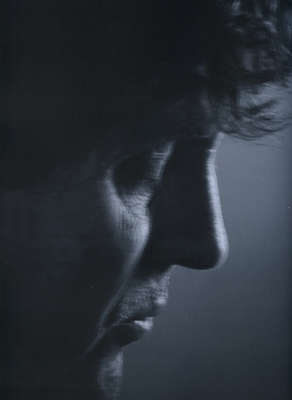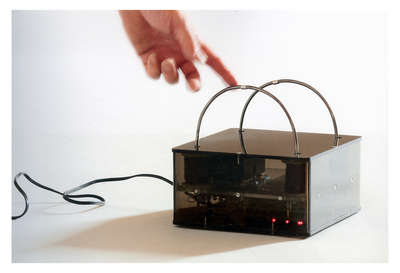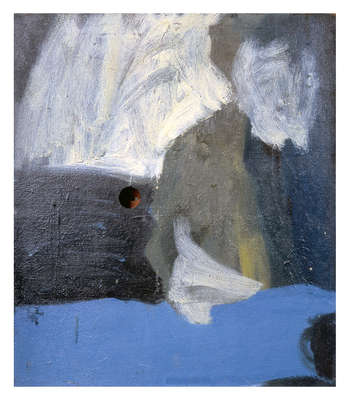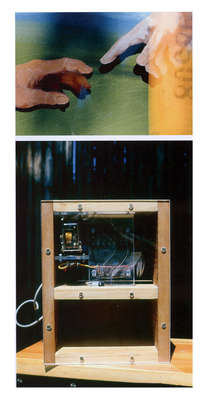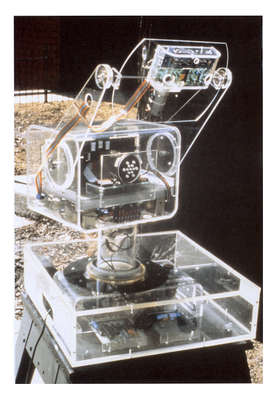| 1938 |
Born in San Antonio (TX, USA). (Tag, Monat) |
| 1951-1955 |
Punchard High School, Andover, MA |
| 1955-1959 |
Student of Biology at Harvard University, Cambridge, MA |
| 1959-1960 |
Student of Fine Art at the Art Students League, New York. Paints in the style of the New York School |
| 1962-1963 |
Fine Art at San Francisco Art Institute. Works as an assistant to an electrician in the port of San Francisco |
| 1964-1966 |
Moves to London, UK. Frst experiments in electronically-based art |
| 1965 |
Travel in the Middle East |
| 1966 |
Moves to Toronto (Canada). First electro-kinetic works. |
| 1969 |
Participates in Some More Beginnings, organized by Experiments in Art and Technology (E.A.T.), at Brooklyn Museum of Art. Exhibits his first electronic work, First Tighten Up on the Drums. |
| 1974 |
The installation Ménage employs five independent robots, four of which interact on the ceiling of the exhibition space. |
| 1975 |
Mural work Splish Splash Two commissioned for the foyer of the Canadian Broadcasting Corporation, Vancouver (Canada). |
| 1976 |
Gets first computer; from now on produces computer-operated works, mainly robots. |
| 1977 |
First robot to be reconstructed and improved in several versions, for Facing Out Laying Low. |
| 1978 |
Speaker in panel discussion Pygmalion or Pythagoras: Sculptural Response to Living Systems with Jonathan Benthall, Jack Burnham, Edward Ihnatowicz and Marshall McLuhan, at the 10th Annual Sculpture Conference York University, Toronto (Canada). |
| 1978-1979 |
Member of the Toronto branch of the group Worldpool established to discuss, produce and criticise works based on telecommunications. |
| 1978-2003 |
Lecturer in the Integrated Media Program at Ontario College of Art & Design, Toronto |
| 1983 |
Organisational support for, and participation in, Roy Ascott’s project Plissure du Texte, in which a fairy-tale character is allocated to each of ten locations. They communicate daily for two weeks, via a text-processing link only. – Speaker in panel discussion Robots with Carl Helmers, Jr., David Leavitt and Nam June Paik, chaired by Willoughby Sharp, at the conference Art and Telecommunications, School of Visual Arts, New York. |
| 1985 |
Second prize in competition to produce an object for Le Zoo des Robots of the Musée National des Sciences, des Techniques et des Industries, La Villette, Paris (France).
Realizes his first telecommunications project Hearsay. A text is translated into other languages several times, passing through 8 stages around the world in the course of 24 hours and returns to its start; a project in cooperation with artist friends Robert Adrian X and Laura Kikauka. |
| 1986 |
Artist-in-residence at the Open University, Milton Keynes (England).
Participates in the globally net-worked Laboratorio Ubiqua, 42nd Biennale, Venice (Italy). |
| 1990 |
Award for Helpless Robot at the Prix Ars Electronica 1990, Linz (Austria) |
| 1993 |
Participates in the first Cybercity, a model world of robots at McLuhan Centre of Culture and Technology, University of Toronto; Robots can be operated from sites at 45th Biennale, Venice, Italy. |
| from 1994 on |
Concentrates on anonymous works realised as interventions into everyday situations. |
| 1995 |
Panel discussion Robotica: O Cenário Homem-Máquina with David Rokeby, Lúcia Santaella de Braga, and Stellarc, Arte No Século XXI, São Paulo (Brazil). – Petro Canada Award for media art |
| 2003 |
Retires from Ontario College of Art and Design. Continues teaching at Ryerson University, Toronto, until 2008. |
| 2008 |
Third recipient of the d.velop digital art award [ddaa], Berlin. |
| 2009 |
Solo retrospective at Weserburg, Museum of Modern Art in Bremen, Germany. |


